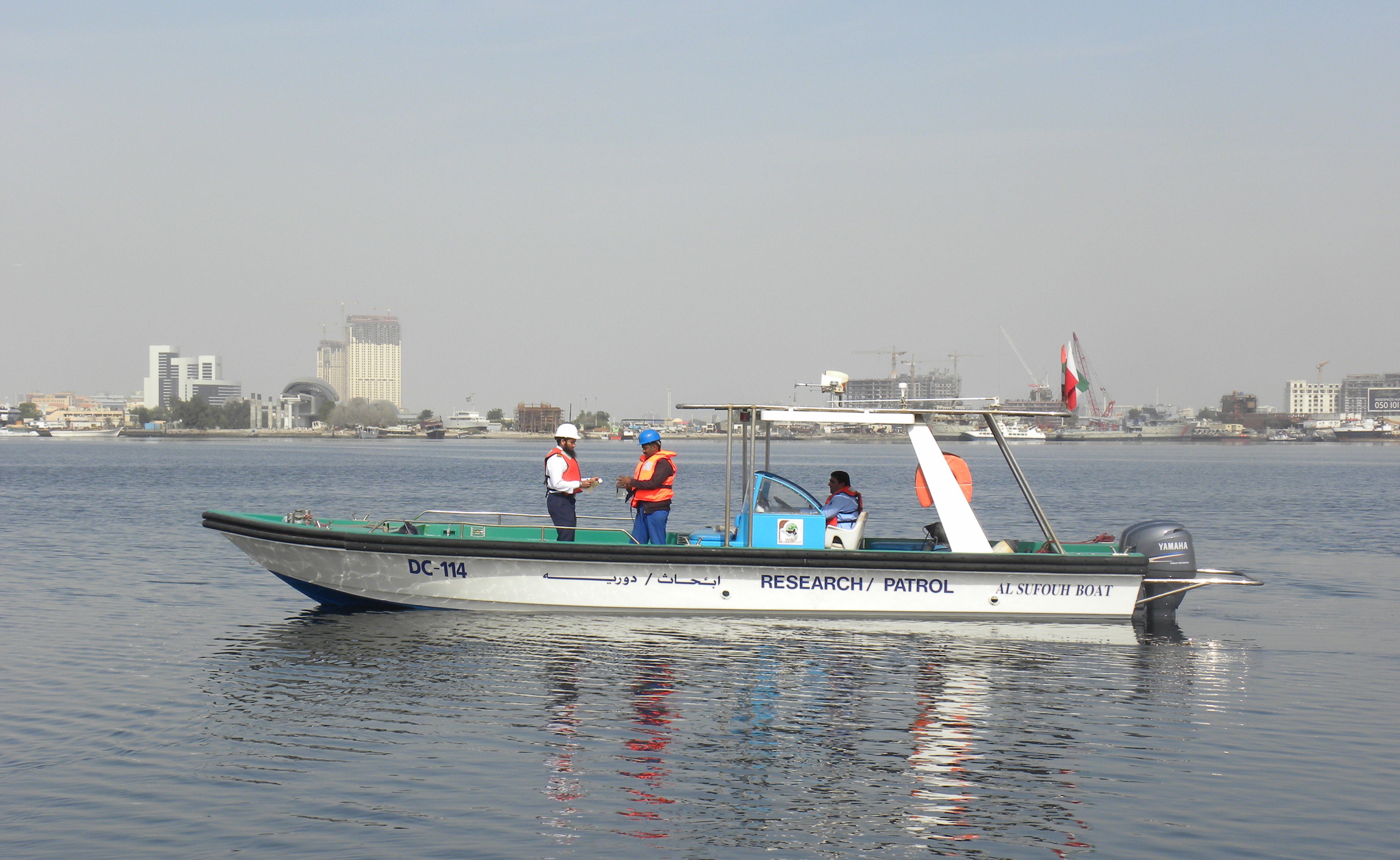Water quality data are continuously collected nearshore and offshore using multi-parameter water quality sondes that measure temperature, conductivity, salinity, dissolved oxygen, pH, turbidity and chlorophyll every 30 minutes at a depth of approximately 1m.
Moreover, routine monitoring is carried out at 30 monitoring locations on a quarterly basis where the samples are analyzed by Dubai Municipality Central Lab - Environmental Laboratory. Parameters monitored are:
Physio-chemical Parameters:
Temperature, Salinity, Conductivity, pH, Turbidity, Dissolved Oxygen
Chemical Parameter:
Phosphate- phosphorous, nitrate- nitrogen, total nitrogen and aromatic petroleum hydrocarbon
Biological Parameters (at selected locations):
chlorophyll-a, Phytoplankton (species diversity, cell count & density), Zooplankton (biomass, population, density & diversity), Benthos (biomass & diversity)
Sediment Quality (annually):
Heavy metals: Chromium, Zinc, Nickel, Lead, Cadmium, and Copper
